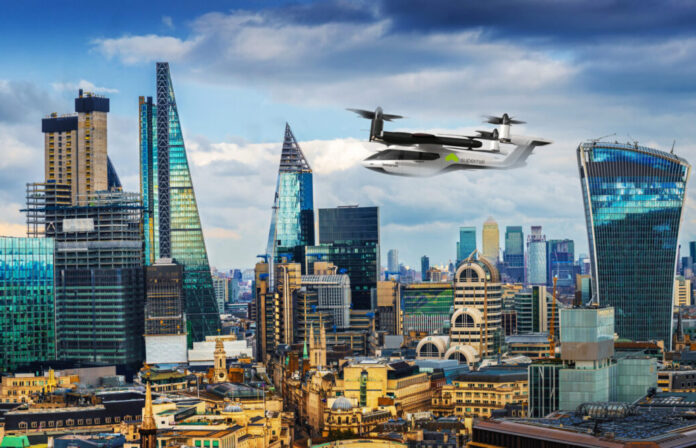eVTOL links to Velaris
Satellite provider Inmarsat is to engage the unmanned aerial vehicles (UAV) of South Korean car maker Supernal as it develops electric vertical take-off and landing (eVTOL) aircraft. An eVTOL is like a helicopter designed make short-haul flights of 30 miles for a small number of passengers. While it has a pilot seat Supernal has included the design option for automated flight, because it wants to be on the launchpad when passengers feel brave enough for unmanned flights when the time comes. Supernal will connect its eVTOL to the Inmarsat’s Velaris comms service. It runs on Inmarsat’s Elera L-band satellite network and was designed for the UAV market, specifically the beyond visual line of sight (BVLOS) side of it.
According to flight expert Nick Wood at Telecoms, BVLOS has been a big sticking point for the commercial UAV market because aviation authorities do not allow it. When they do they only allow it in segregated airspace, or ‘drone highways’ or the ‘documentary aerial shot way’ whereby it’s obligatory for film and documentary makers take an aerial shot of a metropolis. “That restricts the reach of unmanned passenger flights and by extension the potential of the whole market,” said Wood.
Inmarsat’s Velaris system can move 320 Kbps of data, enough for High definition video and important command and control (C2) data from the producer. The terminal includes a 300 gram antenna which is a dealer breaker in the evolving eVTOL market. Velaris also offers full UAV tracking and identification. Together with Inmarsat, Supernal wants to put Velaris through its paces, conduct tests and share data in an effort to optimise hardware and network performance, paving the way for Verlaris’ integration with eVTOLs.
“Inmarsat working with Supernal leads the conversation around connectivity and comms for UAV, eVTOL and UAM vehicles,” said the official statement by Joel Klooster, SVP of aircraft operations and safety, Inmarsat Aviation, “We can deliver the safety services required to allow these vehicles to fly beyond visual line of sight operations and continually improve the customer experience.”
Meanwhile Nokia recently launched its drone-in-a-box service that promises automatic, BVLOS flights as two drones connect to public or private 5G or LTE networks. Drones have similar flight altitude and distance to eVTL so the commercial UAV connectivity market could see them competing with each other or they could evolve distinctive niches. Meanwhile, the Supernal announcement was made the same day that Inmarsat’s proposed sale to rival Viasat cleared a crucial hurdle.


